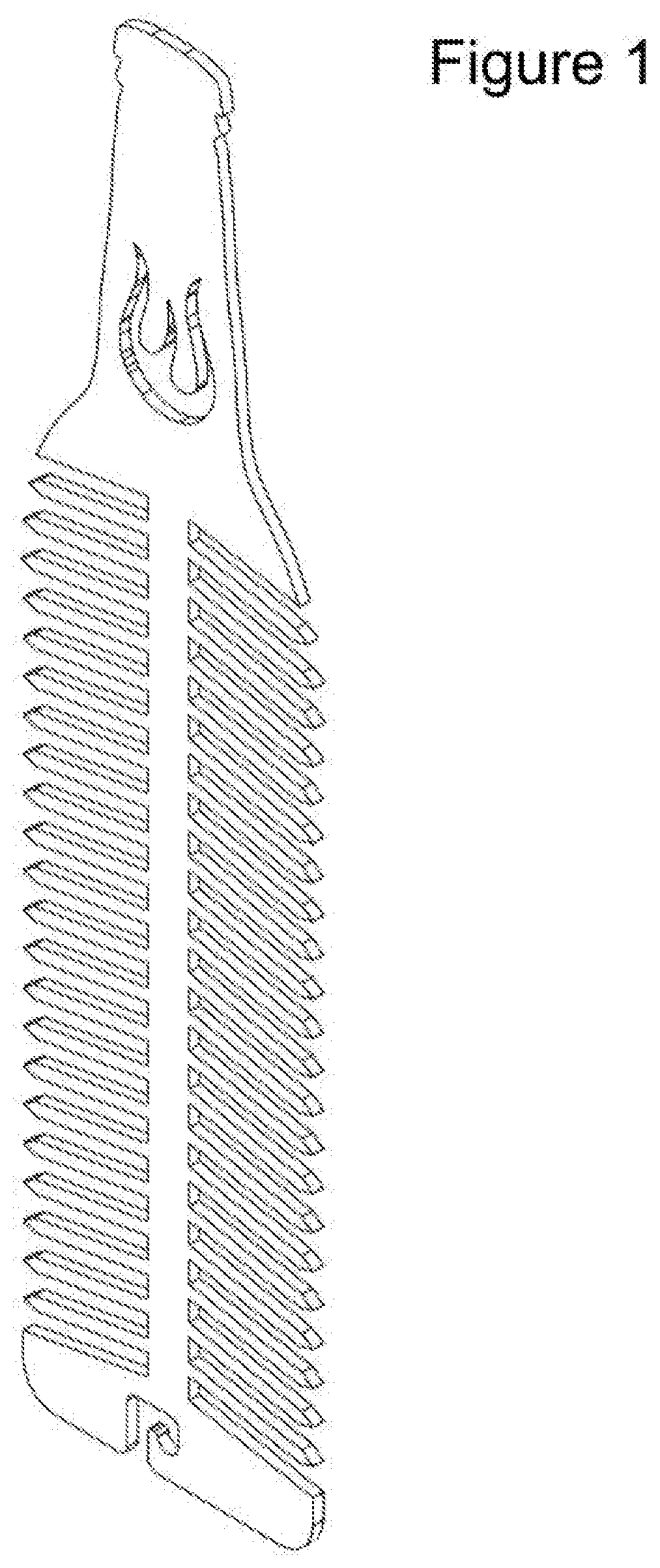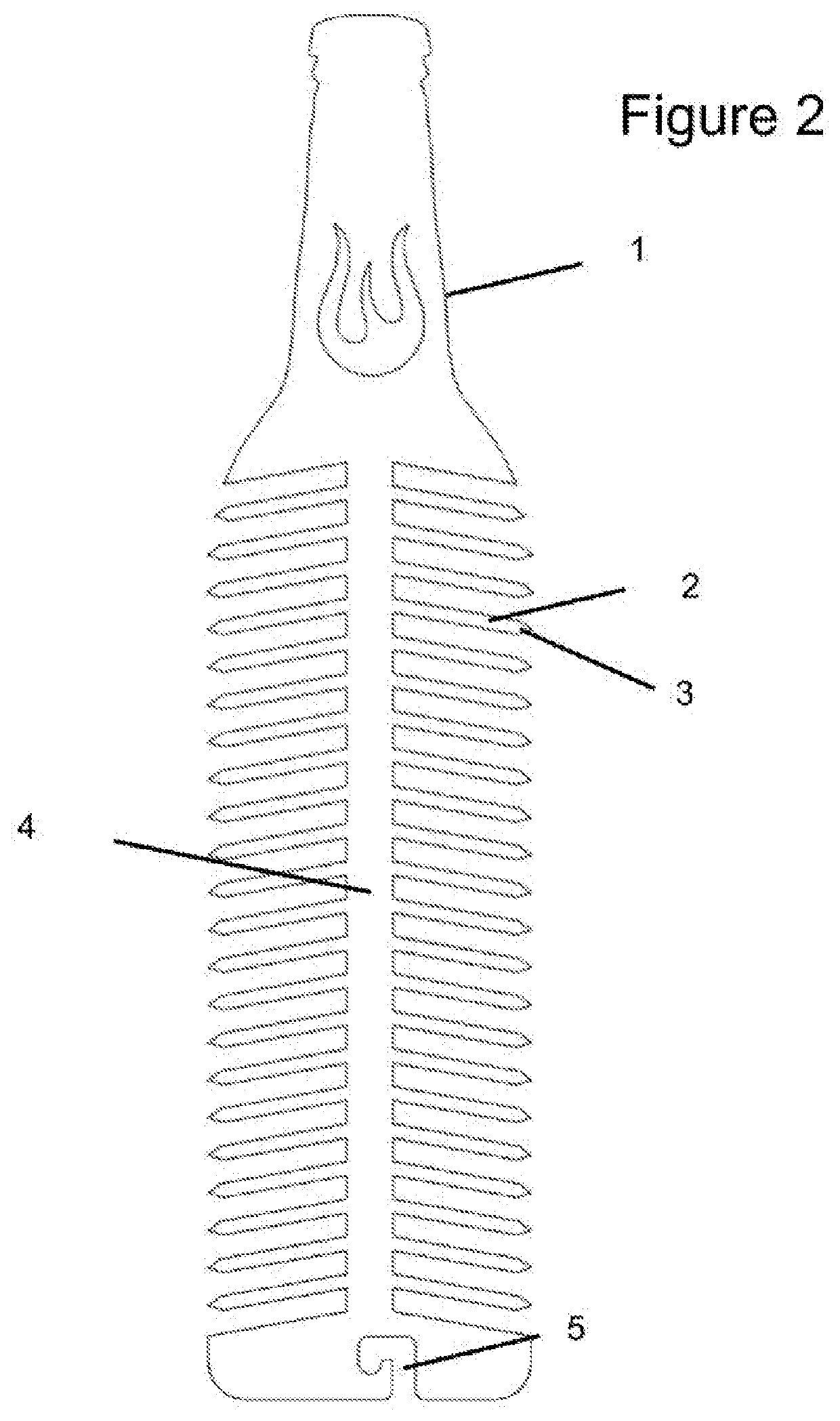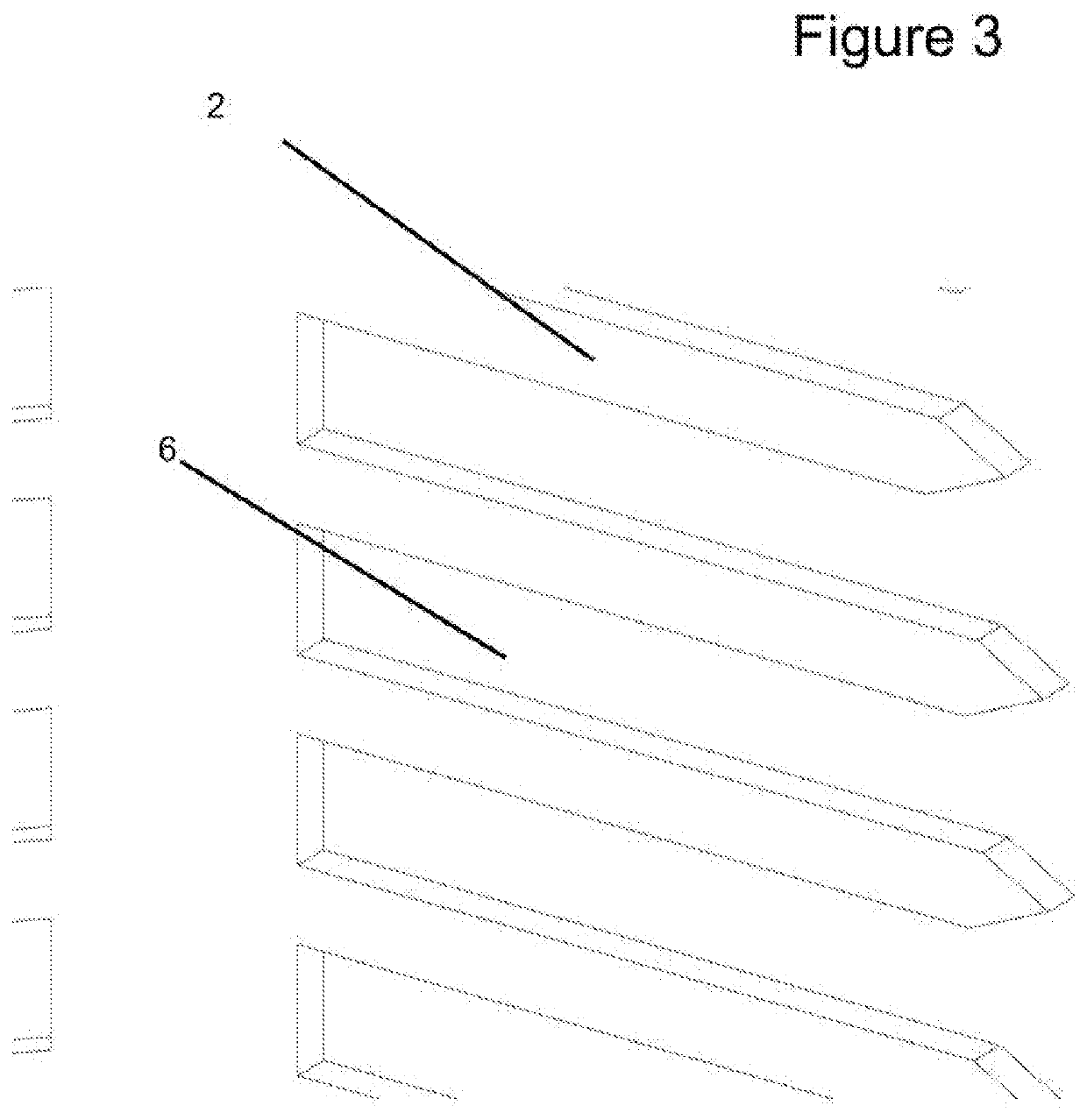However, there are quite a few drawbacks to the current implementation.
The first drawback with the traditional design is the mediocre
heat distribution achieved inside the food items being cooked.
Currently, traditional skewers only pierce the
food item at one location and allow for pieces to move around along the skewer's length, which may result in the pieces touching each other or clumping together.
Because of this, the cooking of the food items from the inside is not achieved as effectively.
This results in a lower rate of cooking inside the food items than outside which may leave food items undercooked or uncooked.
If the food items are heated from outside long enough for the temperature inside to reach cooking temperatures, this may result in food items being overcooked on the outside.
Overall, the cooking result is unpredictable, and consistency is difficult to achieve.
Another drawback resulting from the uneven heat distribution is excessive fuel used and a longer cooking time.
Due to slow heat distribution offered by the current implementation, food items need to be cooked much longer.
As a result, much more energy is needed to cook the food items and it takes longer for the user to cook the food items.
Another drawback of the current design in the inability to use skewers in a vertical setting.
Most designs offer no mechanism to hang the skewer to cook vertically.
This design is still prone to the heat distribution and excessive
resource use problems as described above.
Additionally, there is another problem; for the traditional skewers that do have a mechanism to hang vertically, they still however result in reduced cooking quality when used in a vertical cooking setting as opposed to the usually horizontal cooking setting.
Pieces sticking together prevent heat from reaching all parts resulting in uneven cooking.
If different types of food are placed, the pushed together pieces mix flavors and reduce overall
food quality.
Now while some solutions do exist, they have their own set of drawbacks as well.
Skewers with multiple spokes (U.S. Pat. No. 2,557,890A), may hold food together better than the traditional skewer; but, this skewer too has its own set of limitations.
The above referenced skewer is specifically designed for cooking rolled meat products and cannot support a wide range of food items which is a huge downside.
Since the rolled meat covers the entire length of the skewer, it too suffers from the same heat distribution issues.
This skewer also could not be placed vertically since there is no mechanism to hang.
In addition, another downside of this implementation is the ability to clean the cooking device with ease.
The spokes make the cleaning process and food removal process difficult and dangerous as there is a
threat of hands being impaled by the spokes.
Some solutions do try to fix the cleaning and food removal problem mentioned above but do so with limited success.
While it can easily clean skewers and remove food items after cooking in theory, this is not so in practice.
Removing the entire skewer length of food by sliding the food out at one end by pressing at the other end using the clamp results in food items being pressed against each other causing damage and breaking up of the food itself.
The above design also suffers from the same lack of heat distribution, time /
fuel efficiency, and the vertical cooking problem mentioned above which makes it not viable for consumers looking for such features.
Finally, many traditional skewers lack a handle.
As a result, the traditional skewer design may cause the skewer to become difficult to hold by not providing enough area for the user to hold onto the skewer.
Now while some solutions with handles do exist (U.S. Pat. No. 6,286,418B1) it still suffers from many of the problems mentioned above such as heat distribution, resource wastage and inability to hang vertically for vertical cooking.
 Login to View More
Login to View More  Login to View More
Login to View More 


